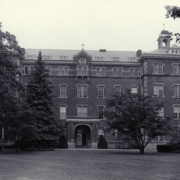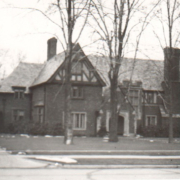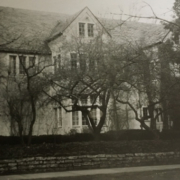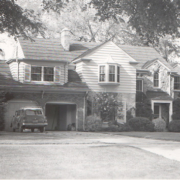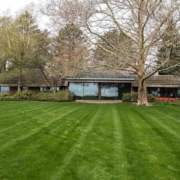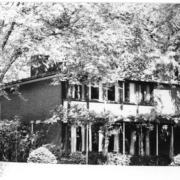Historical Architecture of Grosse Pointe – Grosse Pointe Academy – Part 1
Last week we explored Neff Memorial Park, one of the oldest parks in the Grosse Pointe communities. The site was purchased on July 14, 1910. One hundred years later the residents of Grosse Pointe City celebrated the parks centennial year. To mark the anniversary Norbert P. Neff Park was rededicated to the citizens of the City of Grosse Pointe.
This week we turn our attention to one of Grosse Pointe’s most historic complexes, Grosse Pointe Academy, formally known as Academy of the Sacred Heart. Located at 171 Lake Shore, the complex is situated on a site that is almost twenty-acres. The site consists of five buildings – an early farmhouse (pictured below, constructed in 1860) and four larger academy buildings constructed between 1885 and 1930 – Sacred Heart Academy and Convent, St. Paul’s Parish School, the Chapel, and the Main School Building. Photos courtesy of Katie Doelle.
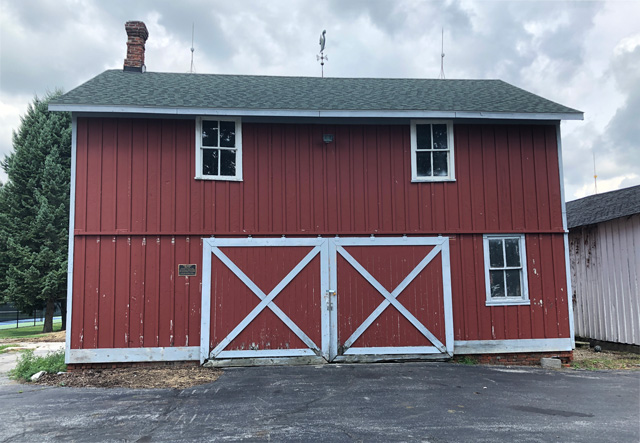
Part one of the series focuses on two of the earlier buildings to be constructed – the Lake Shore Building (Sacred Heart Academy and Convent) and the Early School (St. Pauls’ Parish School).
The origins of the land on which the Grosse Pointe Academy is located dates to the 18th and early 19th century when the grounds were the location of Grant’s Castle. Source: Grosse Pointe News, Suzy Berschback (August 2022). The site is known for the many beautiful and rare trees that fill the grounds. “At least 67 kinds of trees have been identified – exotic pear trees from Europe, Japanese tamarack, Japanese cherry, copper beeches, Norway spruce and bald cypress”. “Other trees on the grounds once included catalpa, sycamore maple, American linden, black cherry, ash, shagbark hickory, oak, elm, and red pines”. Source: Detroit Free Press (October 1985). It is also reported “at least 50 types of trees are unique to the region, they were brought as seedlings from France and other countries by the founders of Sacred Heart to remind them of their homeland”. Source: Grosse Pointe News, Suzy Berschback (August 2022).
Other sources report “close to 100 silver maple trees, planted in 1890, are still standing forming what is known as ·the “nuns’ walk”. The double line of trees is located on the right-hand side of Kenwood Road (as you head up the street from Grosse Pointe Blvd). The maple trees originally ran from the formal gardens of Grosse Pointe Academy to where Kercheval is today.
Academy of the Sacred Heart was established by St. Madeleine Sophie Barat in 1851, located in Detroit on Jefferson Avenue. It operated as both a boarding school and a day school. Further buildings were acquired in 1854 and 1861.
Lake Shore Building (Sacred Heart Academy and Convent)
In 1860, the Sacred Heart Society purchased the land in Grosse Pointe for a second Academy to be built. The Academy was to become a boarding school for girls located in the suburbs on a rural setting with orchards, formal gardens, and vegetable plots, with enough space for the nuns to grow their own food and be self-sufficient. However, due to the expense of purchasing the land it is reported construction of the new school was delayed until the 1880’s. In 1885, the convent and school were completed.
The building was designed by nationally prominent Catholic architect William Schickel, originally from Germany. Mr. Schickel had immigrated to the United States in 1870, aged twenty, where he began his architectural career with the renowned New York Firm of Richard Morris Hunt. By the early 1880’s, Schickel had formed William Schickel & Company, he focused much of his attention on designing many Catholic churches and institutional buildings, primarily in New York City. Photo courtesy of detroitpubliclibrary.org
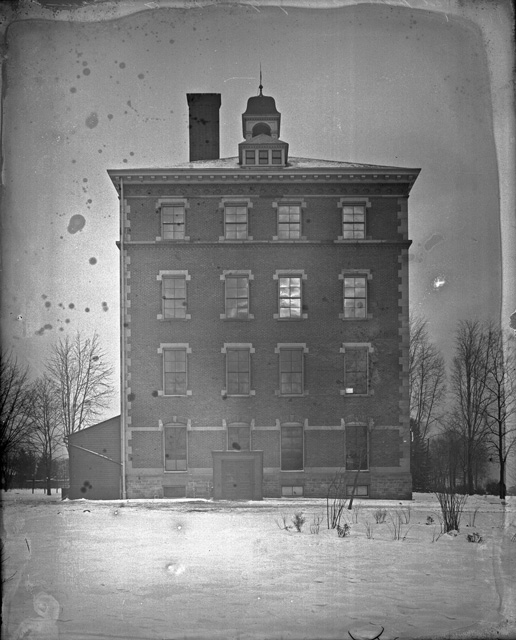
For the Academy and Convent in Grosse Pointe William Schickel created a four-story structure “of simplified Italianate design with red brick walls accented by limestone – quoins, frames around the windows, along with door caps, sills, and band courses”. The building has an I-shaped configuration with the main entrance facing the lake. “A porte cochere with arched openings and pilasters at the corner fronts the main entrance, with the center of the façade facing the lake”. The design also features a gently sloping roof (originally constructed from heavy wood and slate), topped with cupolas, along with small dormer windows. Intricate arched windows line the exterior of the fourth floor. It is reported the interior was furnished with every modern convenience. “Lake water was supplied by a steam engine and distributed from iron tanks on the roof to ensure heat brought every room in the building up to a standard 70 degrees”. “The school was situated on the property line so that the cloistered nuns were able to enter the building from within the property and the students could enter through the door that faces the St. Paul’s parking lot”. “The remainder of the property continued to be a self-sustaining farm to provide fruit and vegetables to those who lived at the school”. Images are courtesy of: www.nps.gov. Photos are by Resource Design Group. Color photo is courtesy of Katie Doelle.
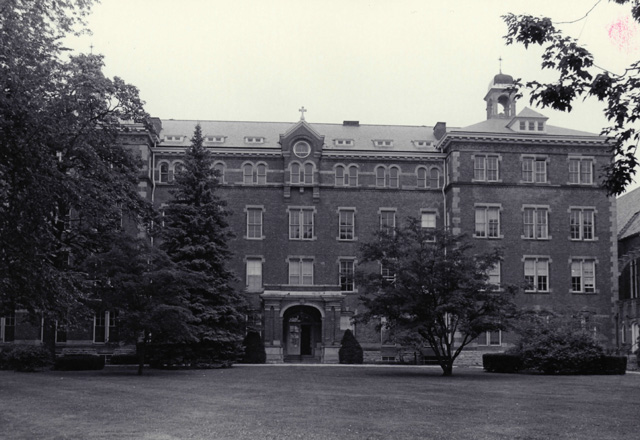
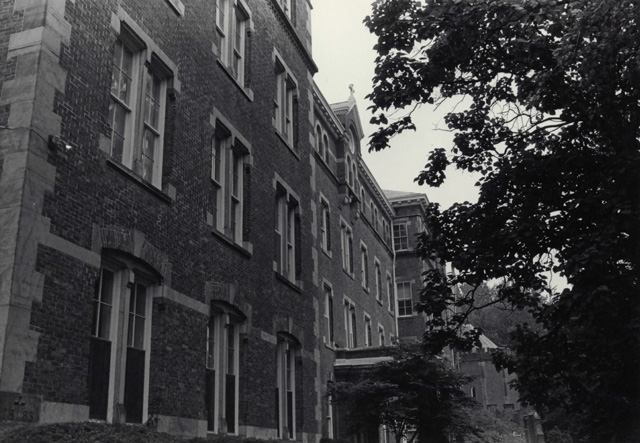
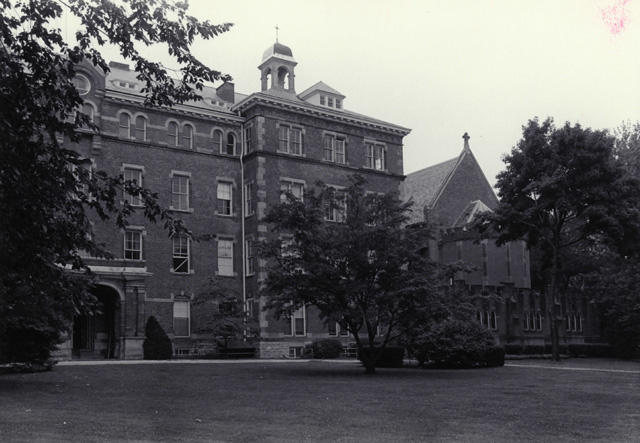
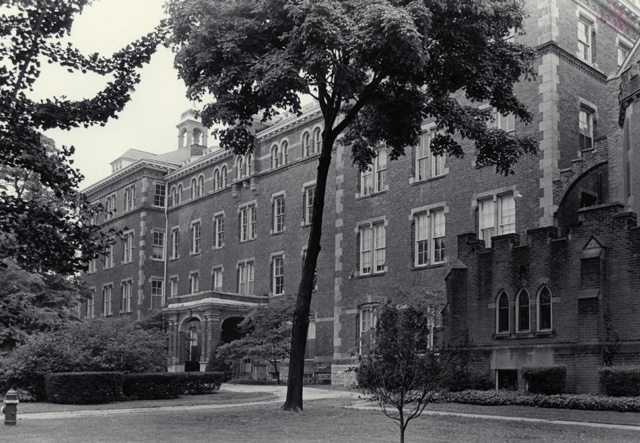
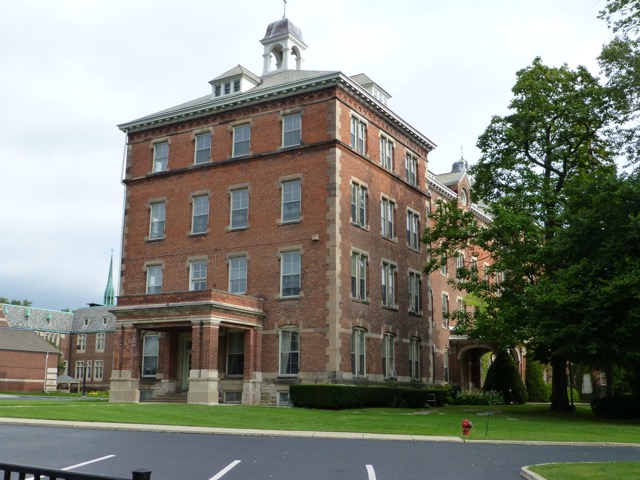
At the time of completion is reported “the main entrance (now on Moran) was originally on Lake Shore Drive”. “The driveway formed a heart shape appropriate for the Sacred Heart Academy and Convent”. “It enclosed a heart-shaped flower bed filled with red tulips in spring and various red flowers in summer and was bordered by silver maples and other trees”. Source: Detroit Free Press (October 1985).
It is alleged the building cost $80,000 (around $2.4m today). Upon completion, the new compound was described as “the most complete of its kind in the country”. The boarding school was available to young ladies, aged K through to 12th grade. Today, the building houses the administrative offices of the Grosse Pointe Academy.
Early School (St. Paul’s Parish)
In 1886, the parish school for St Paul’s, located near the Academy, was constructed. The school stands separate from the other Grosse Pointe Academy buildings, adjacent to the St. Paul’s Church property. Constricted of red brick the school was created in the Romanesque Revival style. It is reported “the parish school was built one year after the Academy and Convent opened. It was determined that a free school for the children of the neighboring St. Paul’s Parish was necessary, in keeping with the tradition (established by St. Madeleine Sophie Barat, foundress of the society), of offering education to children of all economic levels, not just the wealthy”.
The original building consisted of four rooms with the front door facing the St. Paul’s property. In 1912, the once symmetrical building was enlarged. The addition was designed by renowned Detroit architect William B. Stratton. It features a roof of two heights with a frieze of dentil brickwork and Pewabic tile to help link the new part to the older section. Pewabic tile was also used to line the walls of the building. Today the building serves as a Montessori school for pre-school-age children. Images are courtesy of: www.nps.gov. Photos are by Resource Design Group. Color photo is courtesy of Katie Doelle.
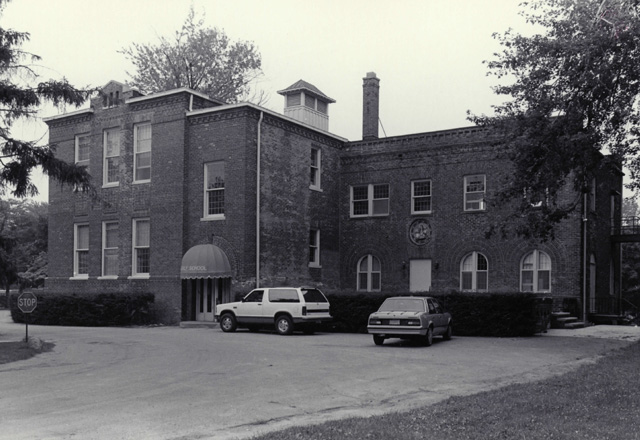
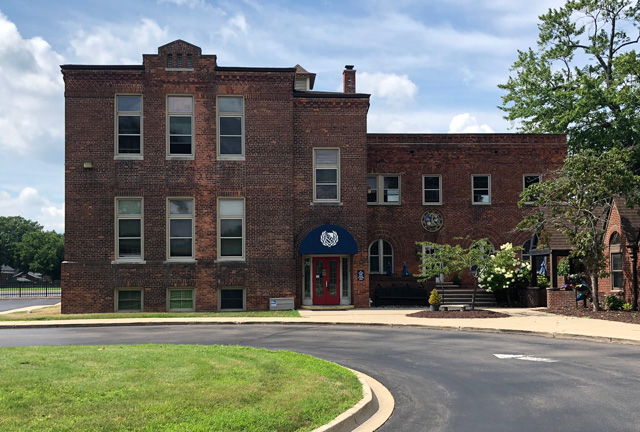
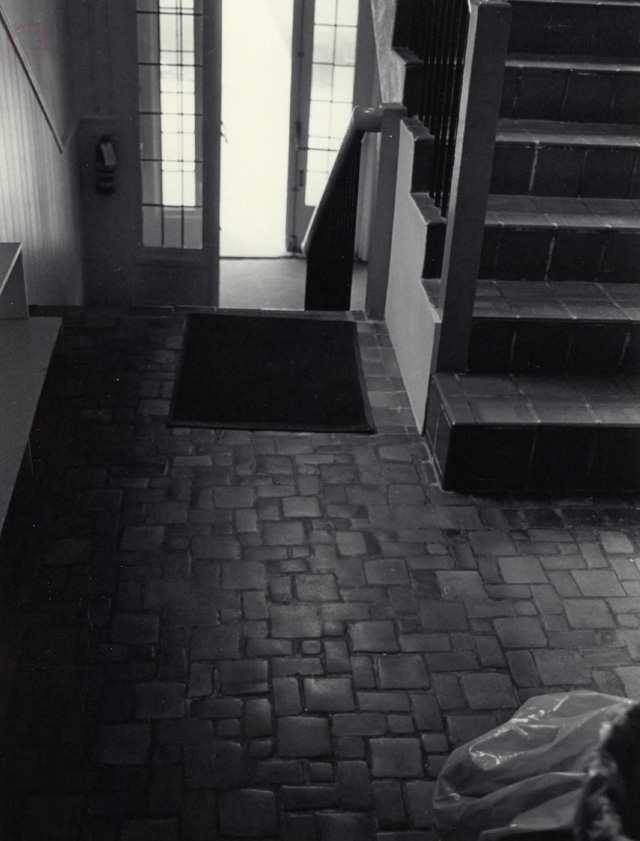
The Grosse Pointe Academy buildings were listed as a designated Michigan Historical site in 1977, and listed on the National Register of Historic Places in 1987.
In part 2, we will continue the story of the Grosse Pointe Academy with the history of the chapel and the main school building.
*Photos courtesy of the Higbie Maxon Agney archives unless stated.
** Research, information, and data sources are deemed reliable, but accuracy cannot be fully guaranteed.
Written by Katie Doelle
Copyright © 2022 Katie Doelle

